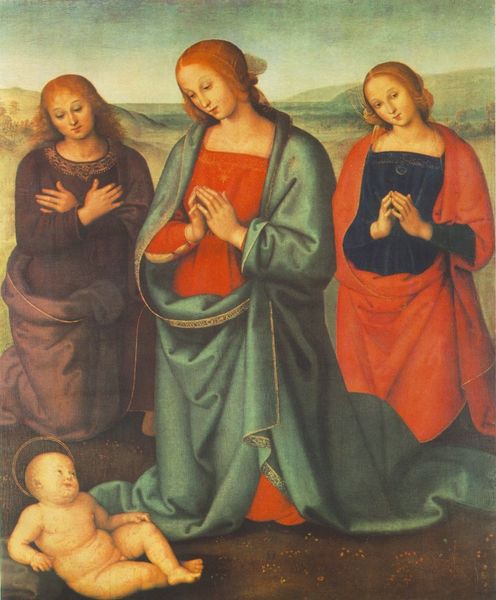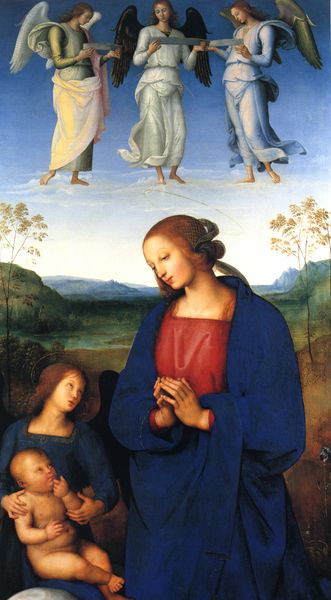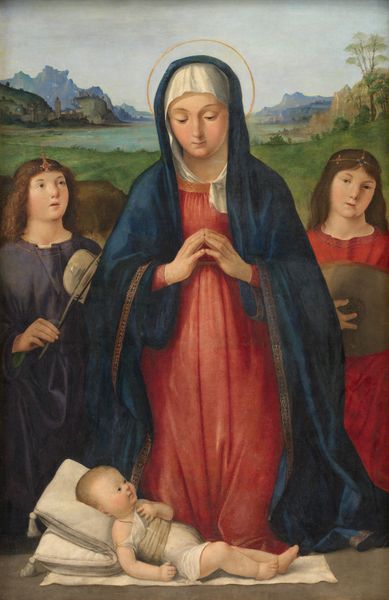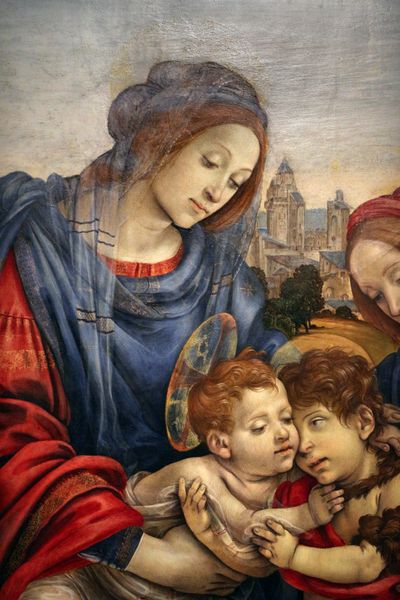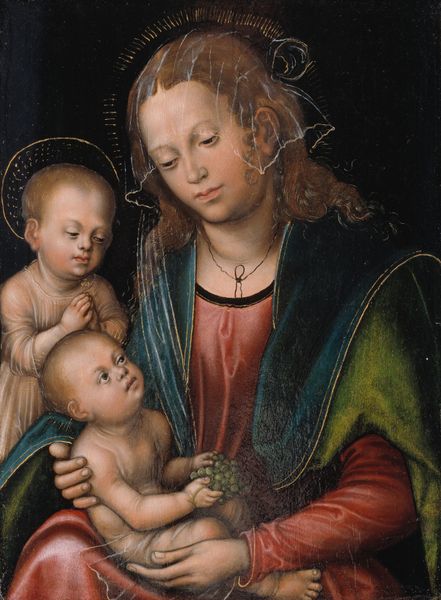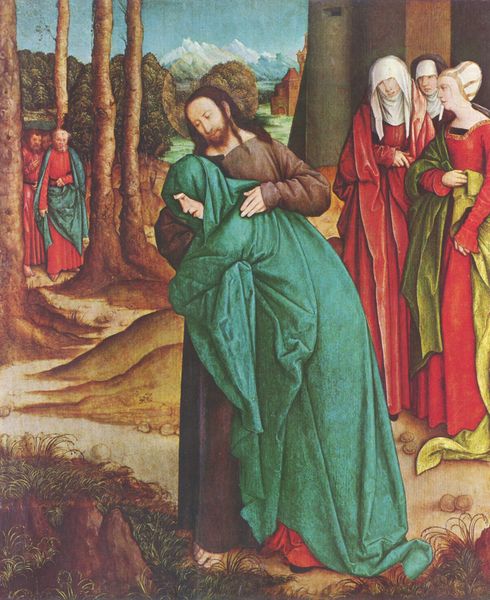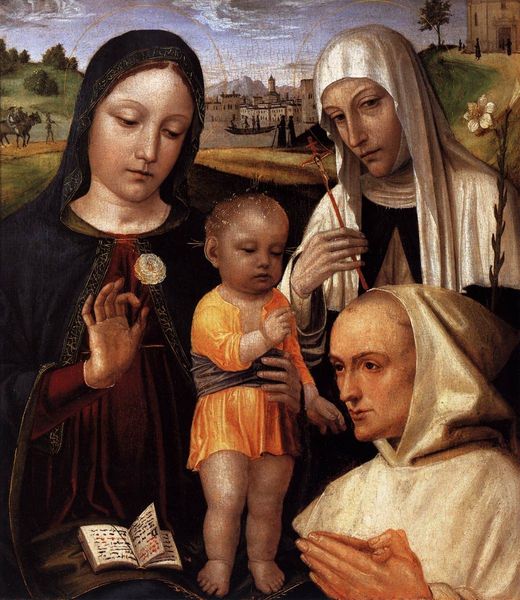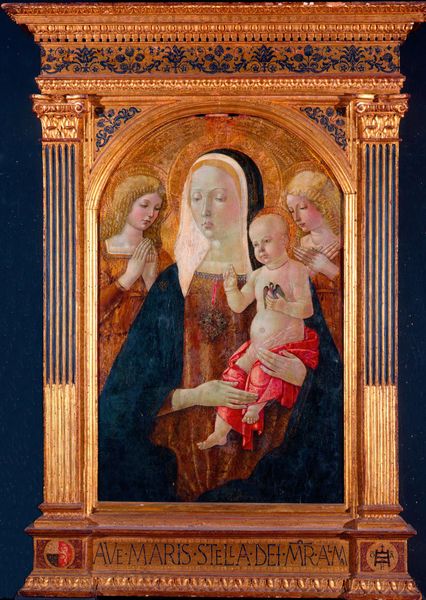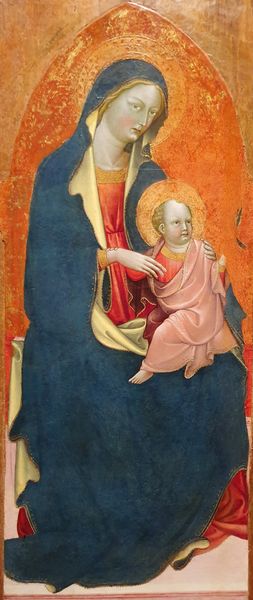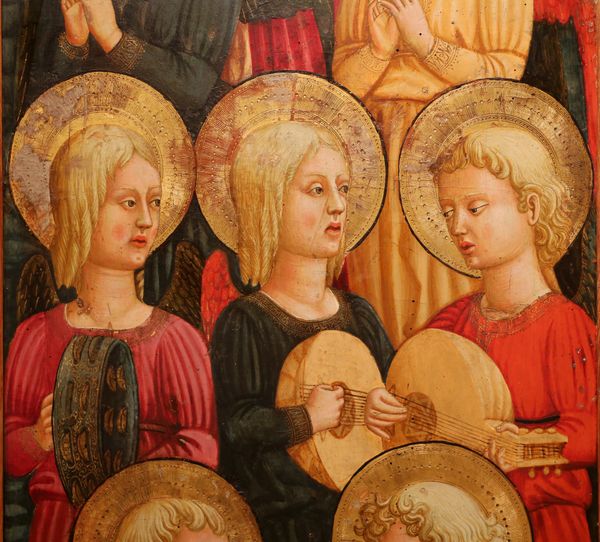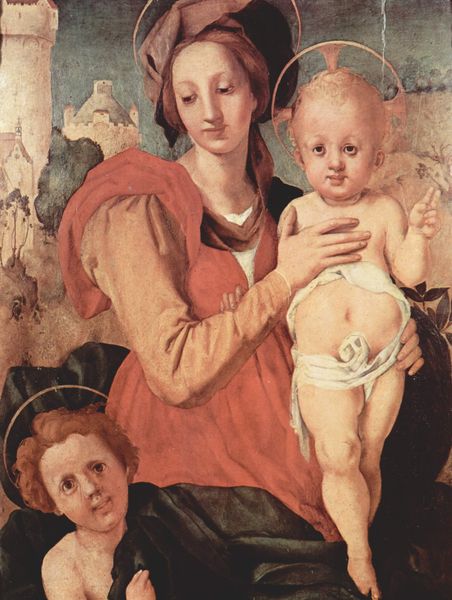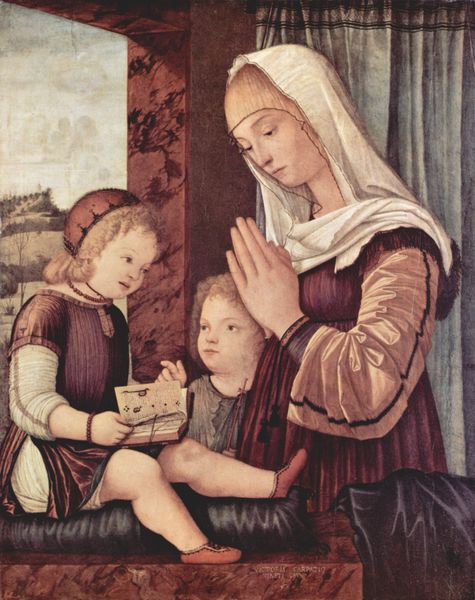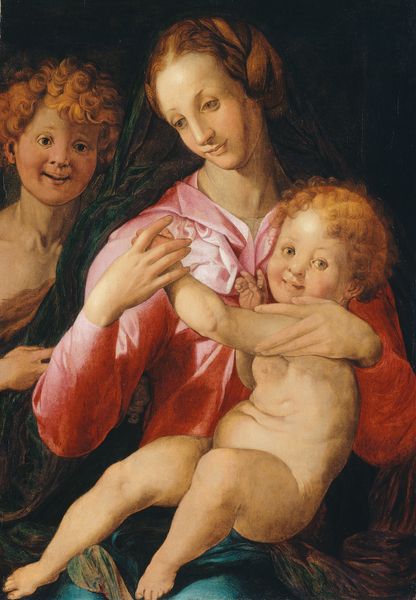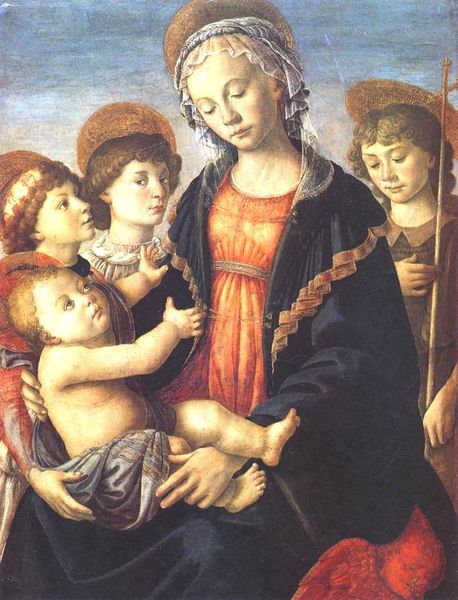
painting, oil-paint
#
portrait
#
painting
#
oil-paint
#
group-portraits
#
christianity
#
history-painting
#
northern-renaissance
#
early-renaissance
#
angel
#
christ
Copyright: Public domain
Curator: This detailed section is from the “Moulins Triptych,” an oil painting dating back to around 1499, attributed to the artist Jean Hey, active in the French court. Editor: Immediately, I’m struck by the angels’ expressions; they seem almost solemn. The color palette, juxtaposing that vibrant rainbow effect with their somber robes, creates an intriguing tension. Curator: Indeed. Jean Hey painted this altarpiece during a politically turbulent period in France. Commissioned by Pierre II, Duke of Bourbon, it served as both a devotional work and a declaration of legitimacy for his reign. The details, like the accurate rendering of clothing, also reveal a meticulous depiction of court life. Editor: Looking at the interplay of light and shadow on the angels' faces, it almost suggests an exploration of early psychology. Observe the meticulous use of light to bring forth volume in the angel in the olive robe. The texture, even through a painted surface, comes to life. Curator: Precisely. The triptych as a whole was erected in the cathedral of Moulins and stands as a symbol of ducal power and piety, with this panel likely aiming to inspire awe and divine contemplation within that political setting. The angelic figures, themselves part of the sacred narrative, reinforce Bourbon’s own divine mandate. Editor: The rainbow hues create a remarkable background; it is very interesting that the choice to use it gives an ethereal yet tangible quality to the scene. But for all its compositional achievements, its effect on me remains the same; these are troubled angels! Curator: Perhaps that emotional pull lies in Hey's subtle integration of humanistic expression within religious art—mirroring, possibly, the anxieties of a region grappling with political instability. Editor: Yes, regardless of the exact context, as viewers we find a directness here that is quite poignant and formally remarkable. Curator: Absolutely. Hey's craft beautifully portrays a pivotal intersection between the earthly and the divine, and political power, offering us rich insights into both the artistic and societal values of the late 15th century.
Comments
No comments
Be the first to comment and join the conversation on the ultimate creative platform.
